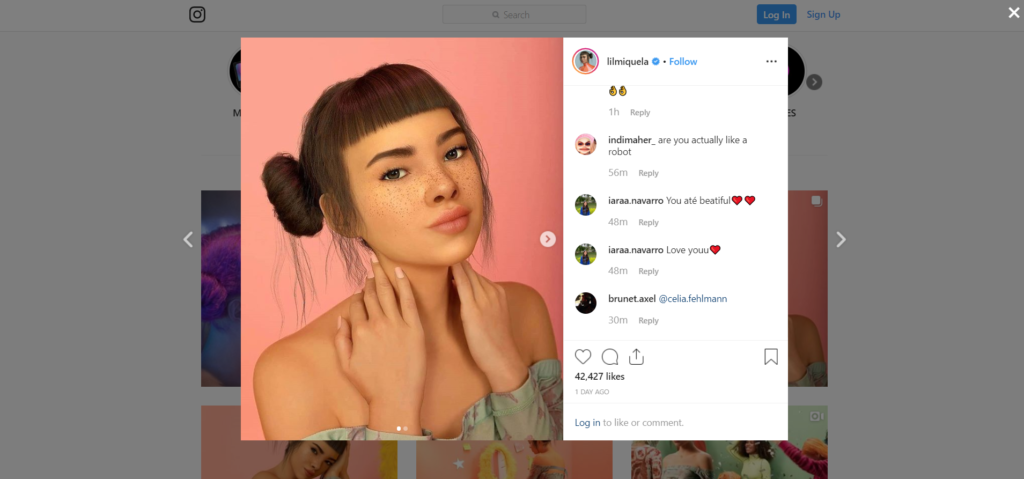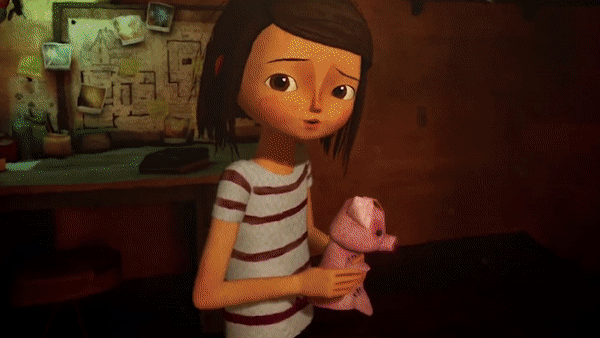From musicians to Instagram models, artificial personalities are taking over the entertainment industry.
Welp, we had a good run, humanity. After spending decades at the top of the entertainment food chain, technology has once again claimed another victim with the rise of the Virtual Being. Okay, maybe I’m being just a touch dramatic, but wouldn’t you be if you learned that artificial personalities were slowly infiltrating the mainstream.
Popstars. YouTube personalities. Social media influencers. Twitch streamers. Instagram models. Virtually all forms of media and entertainment are currently being infiltrated by artificial humans painstakingly constructed to appeal to specific audiences. Honestly, it would be a bit concerning if it weren’t so f@#*%^g cool!
Here’s a bit of history:
Although it’s unclear whether or not the digital singer is the first Virtual Being in existence, current Jpop super star HATSUNE MIKU is widely considered the Godmother of the Virtual Being movement. Developed by Crypton Future Media, Miku was originally introduced in 2007 as a Vocaloid software voicebank in Japan. Cut to 2019 and the character has developed into an international idol. The 16-year-old digital diva has performed for hundreds-of-thousands of screaming fans on stages around the world, opened for megastars like Lady GaGa and released multiple albums of original music.
She’s also developed a rabid fan-base, with one super fan going so far as to spend 13,000 pounds on a wedding to legally marry a Hatsune Miku hologram. I mean say what you want but the ceremony was surprisingly tasteful. Hatsune Miku is living proof — well, maybe not LIVING proof — of the immense potential of the all-digital performer, in the process inspiring what could arguably be described as the first wave of Virtual Entertainers. And I’m not talking about just musicians.

Spend even a couple of minutes on a professional set and you’ll quickly learn the pros and cons that come with working with recognizable talent. Humans are needy, self-conscious creatures, especially when it comes to the world of fashion and social media. With Instagram personalities like LIL MIQUELA and BERMUDA, digital agency Brud is building the next generation of social influencers, literally. First appearing in 2016 with the launch of her now-viral Instagram profile, virtual influencer Lil Miquela has gone from a niche project to an internet darling, working with major brands like Calvin Klein and Prada.

She’s released original music in collaboration with popular acts like Baauer, amassing an impressive 1.7M followers in the process. Earlier this May, she appeared alongside Bella Hadid as part of an experimental Calvin Klein commercial that would end up drawing criticism from the LGBTQ community for their use of an unethical marketing technique referred to as Queerbaiting. Regardless of the backlash, the 19-year-old artificial personality has continued to grow; so much so Brud has introduced several other personalities to their growing lineups of virtual beings, such as Bermuda and Blawko.
Of course, these names receive an immense amount of support from funding, advertising, and various other resources. A true measure of a growing industry, the Virtual Being industry has already generated a thriving community of independent personalities; Characters building their brands and communities from behind a cheap webcam in their cramped bedrooms with only a fictional backstory and their hopes and dreams guiding them forward. But how exactly are these Virtual Beings being manufactured–err–born? For that, let’s take a look at the ladies of the virtual K-pop girl group, K/DA.
The group is composed of four female characters featured in Riot Games’ incredibly popular Multiplayer Online Battle Arena game, League of Legends — Ahri, Akali, Evelynn, and Kai’Sa. Designed originally to promote the 2018 League World Championship and to sell in-game skins, K/DA has since developed a hardcore fan group and mainstream media attention thanks in large part to several live performances as well as a viral music video for their debut single, “Pop/Stars.” This past September, K/DA member Akali conducted a live solo performance at the Pro League Regional Finals in Shanghai, followed by a LIVE INTERVIEW with a human correspondent where she answered questions in real-time.

The live appearance, conducted in large part by leading computer vision and facial animation studio, Cubic Motion, blew the minds of both live audience members and those tuning into the stream, offering them the surreal chance to view the famous rogue assassin interact with humans in a real-world environment. Meanwhile, behind the scenes, a live actor dressed in a motion capture suit. This expensive onesie tracks every movement the wearer makes, no matter how minute, and injects that data into a 3D character.

The result is a virtual character that instantaneously mirrors the actions of the actor. Special hand-tracking gloves monitor the movements of individual fingers; meanwhile, facial animation technology, such as Cubic Motion’s Persona, scans the user’s face and replicates the actor’s expression, mouth shapes, and line of sight. You’re basically pulling the strings of the world’s most advanced puppet, only instead of controlling the action from above, you step right into the shoes of your digital character.

Of course, the setup I just described could cost you anywhere from $100,000 to $200,000. So unless your Jeff Bezos, those looking to create their own Virtual Beings will have to opt for a drastically simpler setup. Thankfully, a growing community of indie beings — ahh, see what I did there — have been sourcing their own solutions for creating fictional human beings. Affordable PC apps such as Facerig do an excellent job at tracking your facial expressions and upper body movements, meanwhile mobile-based apps with names I won’t even pretend to pronounce offer even those without computers the chance to get in on the action.

So, where exactly does this go from here? As the concept behind Virtual Beings and artificial personalities continues to infiltrate the mainstream, don’t be surprised if more and more of your favorite celebrities turn out to be nonexistent. While they may not seem as invasive as some of the other examples listed above, long-running acts like Josie and the Pussycats, Gorillaz, even Dora the Explorer have quietly been preparing us for this inevitable deus ex machina future.
Whether it be musicians, social media influencers, YouTube personalities, Twitch streamers or any other on-camera form of entertainment, Virtual Beings are on the way. And I for one welcome our new AI overlords. Especially, Hatsune Miku. Ahh! I love you Hatsune!!!
Feature Image Credit: Cubic Motion
The post The Rise Of Virtual Beings – K/DA, Lil Miquela, Hatsune Miku, VTubers appeared first on VRScout.
from VRScout https://ift.tt/2O7Thoa
via IFTTT
No comments:
Post a Comment